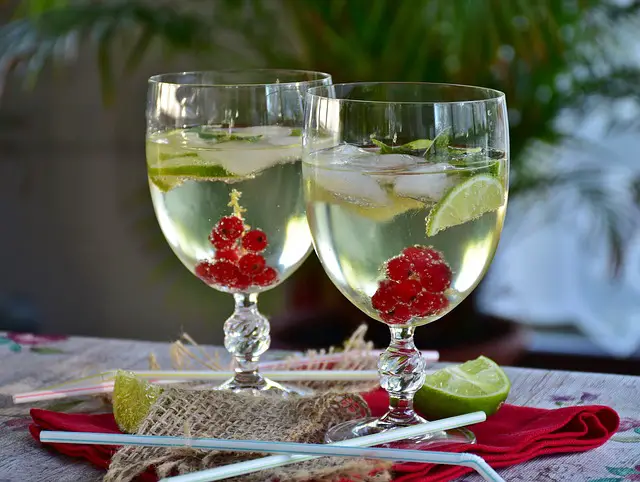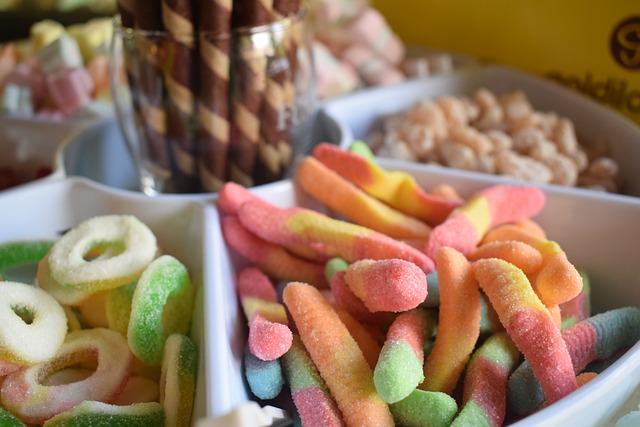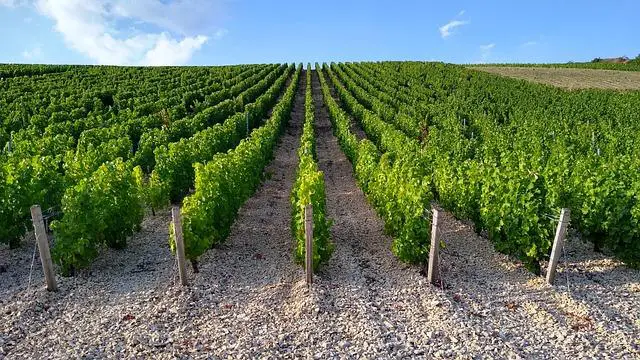When it comes to the complex world of wine, there is an endless array of choices, each with its own unique characteristics and flavors. Among the numerous varietals, Chardonnay and Pinot Grigio have emerged as two of the most popular white wines. However, for wine enthusiasts seeking a refreshing and crisp glass, the question remains: is Chardonnay drier than Pinot Grigio? In this article, we will delve into the depths of these two renowned wines, comparing their dryness levels to uncover the truth behind their distinct profiles. Prepare your palate for an informative journey that will help you navigate the maze of wine preferences and discover which of these beloved whites suits your taste buds best.
Obsah
- Chardonnay vs. Pinot Grigio: A Dryness Face-Off
- Understanding the Dryness Scale: Analyzing Chardonnay and Pinot Grigio
- Examining Chardonnay’s Dryness Profile: A Deeper Dive
- Pinot Grigio’s Dryness Unveiled: Unearthing its True Nature
- Factors Affecting Dryness: Comparing Chardonnay and Pinot Grigio
- Finding the Perfect Balance: Choosing Between Chardonnay and Pinot Grigio by Dryness
- Recommendations for Chardonnay Lovers: Exploring Dryer Varieties
- Pinot Grigio Aficionados’ Best Picks: Navigating the World of Dryness
Chardonnay vs. Pinot Grigio: A Dryness Face-Off
When it comes to white wine, the battle between Chardonnay and Pinot Grigio for the title of the driest varietal is fierce. Both wines are renowned for their crisp and refreshing qualities, making them the go-to choices for those seeking a bone-dry sensation that awakens the palate. However, there are subtle differences between the two that set them apart in this face-off.
Chardonnay, known for its versatility, carries a reputation for medium to full-bodied wines. Despite its fuller profile, Chardonnay manages to maintain a delightful dryness that leaves a lasting impression. Its flavors tend to range from citrusy notes of lemon and grapefruit to hints of tropical fruits like pineapple and mango, providing a complex and intriguing taste experience. A key factor in its dryness is the oak aging process, which can lend a subtle creaminess and buttery texture to the wine, balancing out its acidity.
Understanding the Dryness Scale: Analyzing Chardonnay and Pinot Grigio
When it comes to wine, understanding the dryness scale plays a crucial role in selecting the perfect bottle. Chardonnay and Pinot Grigio, two popular white wine varietals, offer contrasting levels of dryness, making them interesting subjects for analysis. Let’s delve into the intricacies of these wines and decipher how their dryness affects their flavor profiles.
1. Chardonnay:
Chardonnay, a versatile wine grown in various regions, can range from crisp and dry to rich and creamy. Its dryness is determined by the amount of residual sugar left in the wine after fermentation. Here are the key characteristics to look out for when analyzing the dryness of Chardonnay:
– Crisp acidity that cuts through the palate
– Flavors of green apple, citrus, and tropical fruits
– Balanced oak influence, ranging from subtle to pronounced
2. Pinot Grigio:
Pinot Grigio, predominantly grown in Italy, is known for its light and refreshing nature. Generally, this wine leans towards a drier side, but there can be variations in sweetness depending on the winemaking process. Consider the following points when evaluating the dryness of Pinot Grigio:
– Crisp and bright acidity, perfect for warm summer days
– Delicate flavors of lemon, pear, and melon
– Minimal oak influence, resulting in a clean and zesty finish
By understanding the dryness scale and analyzing the characteristics of Chardonnay and Pinot Grigio, you can confidently choose the style that aligns with your taste preferences. Whether you prefer a dryer, crisper experience or a richer, more complex one, exploring the spectrum of dryness in white wines opens up a world of possibilities.
Examining Chardonnay’s Dryness Profile: A Deeper Dive
Chardonnay, one of the most popular white wine varietals, is known for its wide range of flavors and styles. While many wine enthusiasts appreciate its versatility, it is the dryness profile of Chardonnay that often becomes a subject of curiosity and exploration. Delving deeper into its dryness profile allows us to understand the intricate characteristics that Chardonnay brings to the glass, making it an ideal choice for both wine connoisseurs and casual drinkers.
So, what exactly contributes to Chardonnay’s dryness profile? Firstly, the fermentation process plays a vital role. During fermentation, the natural sugars in the grape juice are converted into alcohol by yeast. For dry Chardonnay, the fermentation is stopped early, resulting in a wine with minimal residual sugar. This dry style is often favored by those preferring a crisp and refreshing glass. Additionally, the choice of oak barrels for aging can also influence the dryness profile of Chardonnay. While barrels can impart buttery and creamy flavors, they allow for a small amount of oxygen exposure, which helps to further dry out the wine.
- Climate: Chardonnay is greatly influenced by the climate of the region where it is grown. In cooler climates, the grapes develop higher acidity, resulting in a drier profile. Warmer climates, on the other hand, tend to produce riper grapes with more residual sugar, yielding a slightly sweeter Chardonnay.
- Harvesting Time: The timing of grape harvest also impacts the dryness. Grapes picked earlier will often retain more acidity, contributing to a drier wine. Conversely, grapes left to ripen for longer periods on the vine will develop more sugar, leading to a wine with a touch of sweetness.
- Winemaking Techniques: Various winemaking techniques, such as malolactic fermentation and lees stirring, can influence the texture and ultimately the dryness of Chardonnay. Malolactic fermentation, when applied to Chardonnay, introduces a smoothness and creaminess to the wine but does not necessarily affect its dryness. Lees stirring, on the other hand, can add richness and complexity without adding sweetness.
By exploring Chardonnay’s dryness profile, we unlock the key factors that shape this beloved wine’s character. Whether you prefer a bone-dry Chardonnay or one with a hint of residual sugar, understanding the interplay between climate, winemaking techniques, and the fermentation process allows us to truly appreciate the artistry behind each glass.
Pinot Grigio’s Dryness Unveiled: Unearthing its True Nature
Pinot Grigio, the pale and delicate white wine that has captured the hearts of wine enthusiasts worldwide, holds a secret waiting to be discovered. Nestled in its ethereal appearance lies a true revelation: its unparalleled dryness. As we peel back the layers of this enigmatic grape variety, we encounter a flavor profile that distinguishes Pinot Grigio as a crisp and refreshing choice for those seeking a bone-dry experience.
One of the hallmarks of Pinot Grigio’s dryness is its distinctive lack of residual sugar. While many white wines offer a touch of sweetness, Pinot Grigio stands apart with its resolute commitment to dryness. It tantalizes the palate with its bracing acidity and clean, precise flavors, leaving no room for cloying sweetness. This refreshing nature makes Pinot Grigio an ideal companion for a myriad of culinary delights, from delicate seafood dishes to zesty salads.
- Beneath its pale hue, Pinot Grigio unveils a vivid spectrum of flavors. Citrus notes of zesty lemon and juicy grapefruit dance on the tongue, creating a lively sensory experience.
- Intriguing mineral undertones provide an additional layer of complexity, reminiscent of the serene landscapes where this grape thrives.
- Its delicate floral aromas, often infused with hints of jasmine or honeysuckle, add an enchanting touch to the overall drinking experience.
Whether enjoyed on a sun-drenched terrace or as an accompaniment to a delightful evening, Pinot Grigio reveals its true nature as an exquisite, dry white wine that entices the senses. Its crispness, expressive flavors, and elegant structure establish it as a timeless classic that has captured the hearts of wine enthusiasts for generations. So, go ahead, uncork a bottle and allow yourself to be transported to the heart of Pinot Grigio’s true dryness, a realm that offers a delightful escape for aficionados and curious beginners alike.
Factors Affecting Dryness: Comparing Chardonnay and Pinot Grigio
When it comes to dryness in wines, several factors play a crucial role. Chardonnay and Pinot Grigio, two popular white wine varieties, differ in certain aspects that affect their perceived dryness. Let’s explore some of the key factors that contribute to the varying levels of dryness in these wines:
Grape Variety: Both Chardonnay and Pinot Grigio come from different grape varieties, contributing to differences in their dryness. Chardonnay grapes have thicker skins, which leads to higher tannin content and a fuller mouthfeel, creating a perception of less dryness. On the other hand, Pinot Grigio grapes have thinner skins, resulting in wines with lower tannins and a crisper, drier taste.
Climate and Aging: The climate in which the grapes are grown also impacts dryness. Chardonnay thrives in cooler regions, such as Burgundy in France, which results in higher acidity and a refreshing dryness. Pinot Grigio, commonly grown in northern Italy, benefits from a moderate climate that emphasizes its natural acidity, contributing to its dry character. Additionally, the aging process plays a role in dryness. Oak aging, often used for Chardonnay, can impart flavors that mask a wine’s dryness, creating a perception of less dryness. In contrast, Pinot Grigio is typically aged in stainless steel, preserving its fresh and dry taste.
Finding the Perfect Balance: Choosing Between Chardonnay and Pinot Grigio by Dryness
When it comes to selecting the ideal wine for your tastes, understanding the concept of dryness is key. Both Chardonnay and Pinot Grigio are popular choices, each with their distinct characteristics that appeal to different palates. Let’s delve into the subtleties of dryness and explore how it can guide your decision-making process.
Chardonnay: This versatile white wine is known for its depth and richness. While Chardonnay can range in dryness, it typically leans towards medium to full-bodied, offering a buttery and creamy mouthfeel. This style is achieved through a process called malolactic fermentation, where tart malic acid is converted into lactic acid, resulting in a smoother texture and flavors reminiscent of vanilla and oak. If you prefer a more luscious and complex wine, Chardonnay might be your go-to choice.
Pinot Grigio: If you crave a lighter and crisper experience, Pinot Grigio might be your perfect match. Originating from Italy, this white wine is typically dry and light-bodied, making it refreshing and easy to drink. With bright citrus flavors like lemon and lime, as well as hints of green apple and pear, Pinot Grigio provides a zingy and invigorating palate. Whether enjoyed on its own or paired with seafood and lighter dishes, its lively acidity and clean finish are sure to impress.
Recommendations for Chardonnay Lovers: Exploring Dryer Varieties
When it comes to Chardonnay, there is a world of options to choose from, and if you’re a fan of dryer varieties, this post is for you! Exploring dryer Chardonnays can be a delightful journey that unveils a range of flavors and aromas. Here are some recommendations to help you dive into the exciting world of dry Chardonnays:
- Chablis: Originating from the cool northern regions of Burgundy, France, Chablis is renowned for producing some of the most classic and revered dry Chardonnays. Its minimal oak aging allows the true characteristics of the grape to shine, offering vibrant acidity, crisp citrus notes, and flinty mineral nuances.
- Monterey County: Located in California, Monterey County is known for its exceptional cool-climate Chardonnays. These wines exhibit a distinctive combination of bright fruit flavors, lively acidity, and a refreshing finish. Look for wines from Santa Lucia Highlands and Arroyo Seco, as they consistently deliver outstanding examples of dryer Chardonnays.
As you embark on your exploration of dryer Chardonnays, don’t forget to consider the aging potential of these wines. Unlike their oaky counterparts, dryer Chardonnays tend to age gracefully, developing complexity and depth over time. It’s always a good idea to taste young and cellar a few bottles to enjoy the evolution of flavors. Remember to serve your Chardonnays at a slightly cooler temperature to enhance their refreshing qualities. So grab a glass and let the adventure begin!
Pinot Grigio, known for its crisp and refreshing taste, has become a favorite among wine enthusiasts who appreciate its dryness. But with so many options available, it can be challenging to find the perfect bottle. Fear not, fellow connoisseurs! We’ve curated a list of our top picks that exemplify the pinnacle of dryness.
1. **Santa Margherita Pinot Grigio:** Hailing from Italy’s renowned Trentino-Alto Adige region, this elegant wine entices with its pale straw color and delicate floral aroma. Its dryness is elegantly balanced with zesty acidity, creating a harmonious sip that invigorates the palate.
2. **Domaine Zind-Humbrecht Pinot Gris:** Produced in the Alsace region of France, this Pinot Gris presents a unique take on the varietal. With its subtle golden hue, it offers a rich and full-bodied experience. The mineral-driven flavors and restrained sweetness are harmoniously contrasted with a dry finish, making it a go-to choice for those seeking complexity. In conclusion, when comparing dryness levels, it is clear that Chardonnay tends to be drier than Pinot Grigio. However, personal preferences may play a significant role in determining one’s preferred wine.










